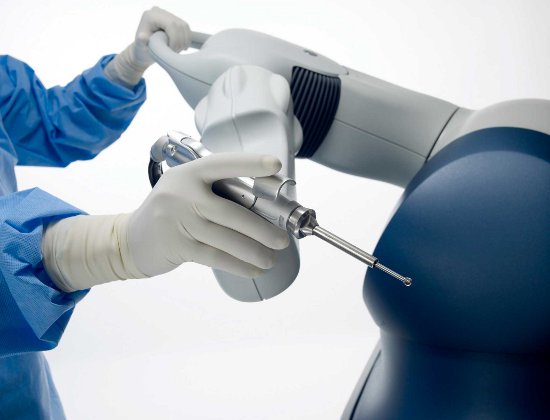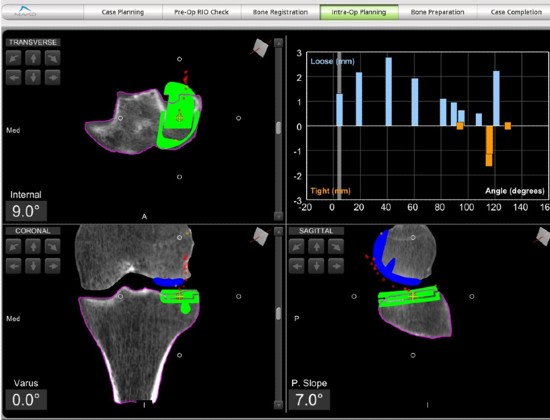The Mako robot - a game changer for joint replacement surgery
Fortius Clinic recently joined forces with Spire St Anthony’s Hospital to provide hip and knee replacements using the latest ground-breaking robotic technology.
The cutting-edge Mako robot transforms the way joint replacement surgery is performed and helps patients get back quicker to their normal activities.
Consultant Knee Specialist Mr Giles Heilpern tells us why he believes the Mako is a game changer.
Knee replacements are considered to be one of the best surgical procedures out there as judged by patient reported outcomes. However, as knee surgeons we are always striving to achieve even better results. A critical review of the published literature on knee replacement surgery reports a headline success rate in the order of 85%. Whilst this is excellent, we prefer success rates in the order of 95% or higher.
We have tried to improve this success rate with meticulous patient selection. There have been various technological innovations over the years, although knee replacements themselves have changed little since their original design in the 1970s and 1980s. Robotics is an innovation that I believe to be a game changer. For partial knee replacement it has been available for over 10 years. For total knee replacement it has only been mainstream for three or four years but early results are extremely encouraging.
At Spire St Anthony's we are lucky to have access to a Mako robot which is the market leader in the field of joint replacement robotics. Robotics dramatically increases the accuracy of our knee replacement implantation. More importantly, in my view, it also allows bespoke positioning of the implant to suit an individual patient. Our ability to fine tune the implant position by as little as half a millimetre or half a degree can have a dramatic effect on the eventual outcome. The accuracy of the robotic technology allows us to implement our plan with high degrees of confidence regarding the final implant position.
As well as increasing accuracy and allowing bespoke implantation the robot also adds a huge degree of surgical safety not present with conventional techniques. This means that we can be secure regarding inadvertent damage of important structures around the knee such as blood vessels or nerves. Because of the confidence in the safety that the robot delivers we therefore have to surgically retract these important structures far less which makes the entire surgical procedure less traumatic than it would be with conventional instrumentation leading to faster recovery and less pain and swelling.
So what are the advantages?
-
Increased accuracy
-
Bespoke individualised implant positioning
-
Less traumatic leading to faster recovery
-
Lower rates of repeat surgery
And the downsides?
-
Cost – although most private medical insurers will fund robotic surgery
-
Availability – we are lucky to have access at Spire St Anthony’s
So how does it work?
Before surgery the patient has a CT scan – essentially a 3D X ray. This allows us to plan the knee replacement accurately down to the actual size of implant required.
The CT scan ‘sits’ in the robot’s brain. At the start of the surgery the surgeon maps the patient’s actual knee – and the robot matches this to the CT in its brain so that it knows the patient’s anatomy precisely in space.
The surgeon virtually plans the knee replacement on screen with the Mako robot. This part is critical – and amazing. We can alter the position of the implants by tiny amounts – a degree or a millimetre. We fine tune this until we find the optimum implant position for that individual patient. The accuracy of the robot then allows us to confidently implant the joint replacement in that position.
Common to many surgeons is a degree of scepticism regarding novel technology. I was certainly sceptical to a degree regarding the potential improvements offered by the Mako robot. I have been using it now for over four years and in my experience it delivers even more than was promised at the outset. If I were to have my knee replaced, I would not have it done without the use of the Mako robot. I really do believe it is a game changer.




